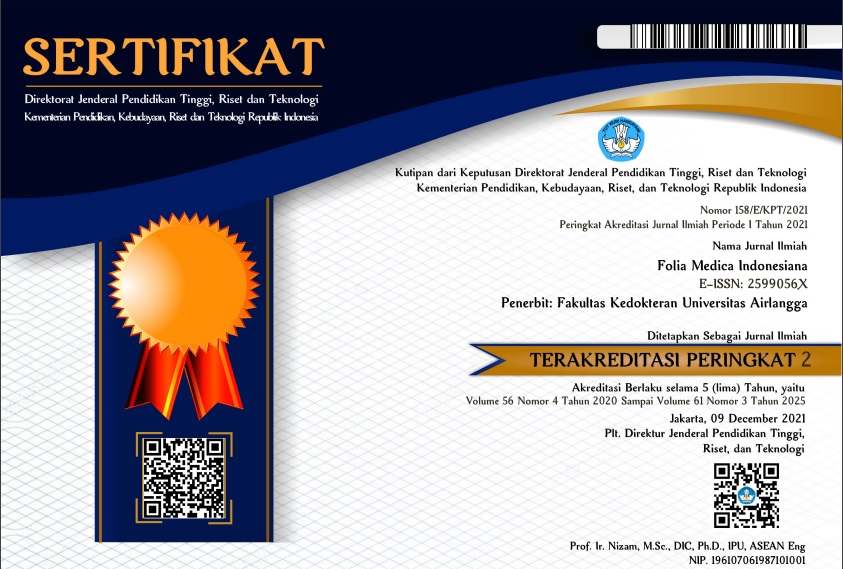Abstract
Vein thrombosis may occur both in deep and superficial vein of all extremities. Ninety percent of vein thrombosis may progress into pulmonary embolism which is lethal. Deep vein thrombosis (DVT) is frequently found in critically ill patients in ICU, especially patients who are treated for a long time. This study aims to analyse the comparison between length of stay and DVT incidents in critically ill patients. A cross-sectional study was employed. We include all patients who were 18 years or older and were treated in ICU of Dr Soetomo public hospital for at least 7 days. The patients were examined with Sonosite USG to look for any thrombosis in iliac, femoral, popliteal, and tibial veins and Well's criteria were also taken. This study showed that length of stay is not the only risk factor for DVT in patients treated in ICU. In our data, we found out that the length of treatment did not significantly cause DVT. Other risk factors such as age and comorbidities in patients who are risk factors may support the incidence of DVT events. The diagnosis of DVT is enforced using an ultrasound performed by an expert in the use of ultrasound to locate thrombus in a vein. Length of treatment is not a significant risk factor for DVT. Several other factors still need to be investigated in order for DVT events to be detected early and prevented.
Keywords
Deep vein thrombosis (DVT), Intensive Care Unit (ICU), length of stay
First Page
278
Last Page
281
DOI
10.20473/fmi.v54i4.10713
Publication Date
12-11-2018
Recommended Citation
Hanindito, Elizeus; Airlangga, Prananda Surya; Sulistiawan, Soni Sunarso; Semedi, Bambang Pujo; Andriyanto, Lucky; Utariani, Arie; and Rehatta, Nancy Margarita
(2018)
"Comparison of Length of Stay and Deep Vein Thrombosis (DVT) Incidents in Dr. Soetomo Hospital,"
Folia Medica Indonesiana: Vol. 54:
No.
4, Article 8.
DOI: 10.20473/fmi.v54i4.10713
Available at:
https://scholarly.unair.ac.id/fk-fmi/vol54/iss4/8






